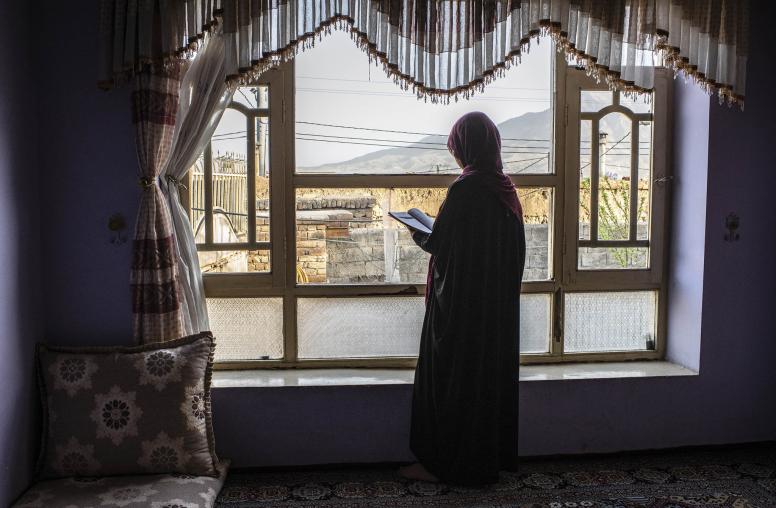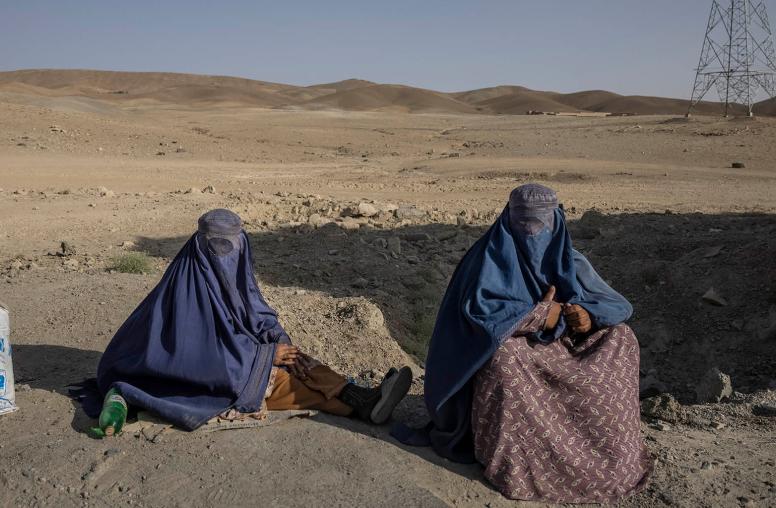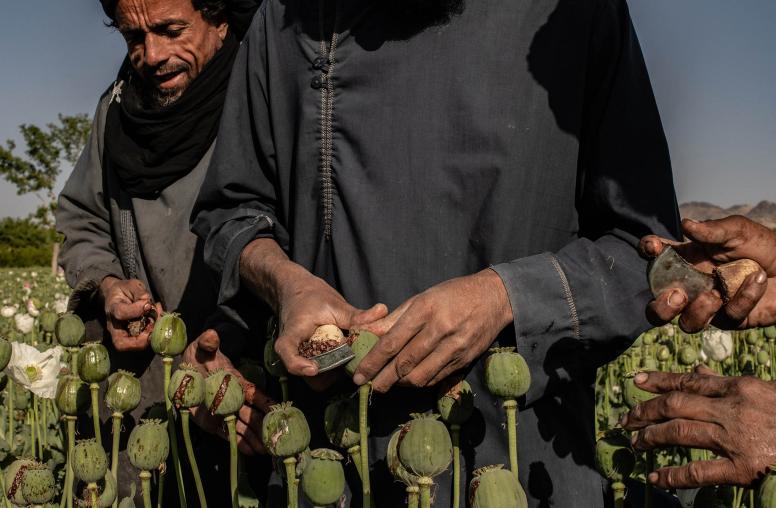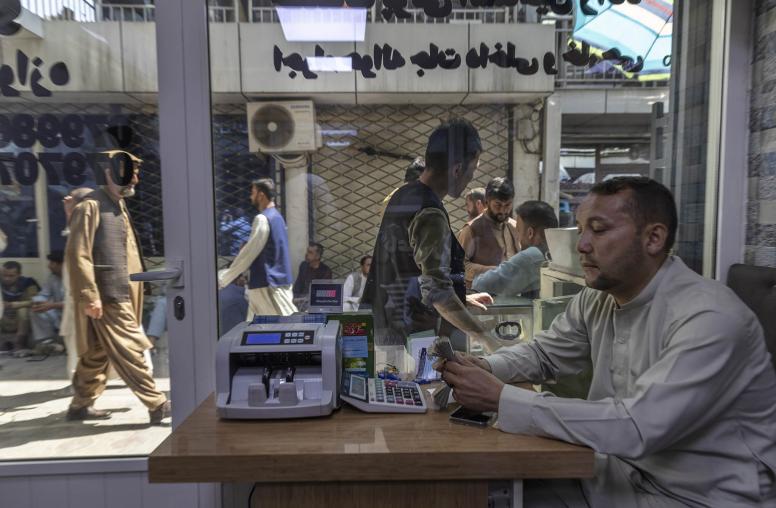One Year Later, Taliban Unable to Reverse Afghanistan’s Economic Decline
The economy is no longer in free fall, but most Afghans cannot afford food and other necessities.
Afghanistan’s economy was already deteriorating before the Taliban takeover of the country on August 15, 2021, suffering from severe drought, the COVID-19 pandemic, declining confidence in the previous government, falling international military spending as U.S. and other foreign troops left, human and capital flight, and Taliban advances on the battlefield. Then came the abrupt cutoff of civilian and security aid (more than $8 billion per year, equivalent to 40% of Afghanistan’s GDP) immediately after the Taliban takeover. No country in the world could have absorbed such an enormous economic shock — exacerbated by sanctions, the freezing of Afghanistan’s foreign exchange reserves and foreign banks’ reluctance to do business with the country.

USIP’s William Byrd discusses the economic situation in Afghanistan a year since the Taliban came to power; the Taliban’s economic management performance; the economic, humanitarian and aid outlook; and priorities for the United States and other countries.
What is the state of the Afghan economy today?
The economy has shrunk by 20% to 30% since August 2021, a great many people have lost jobs and livelihoods, social services have been decimated, poverty and hunger as well as the humanitarian crisis have greatly worsened, hundreds of thousands of people have left the country, government agencies have been denuded of managerial and professional staff, many Afghan businesses have closed or downsized and the bottom has dropped out of already low investment.
After a free fall that lasted many months, the Afghan economy is stabilizing but at a much lower equilibrium, leaving people poorer and more vulnerable to privation, hunger and disease. There is no prospect for the economy to resume high growth let alone recover to pre-2021 levels in the foreseeable future.
Externally, the Afghan currency’s exchange rate has bounced back and is no lower than a year ago. Imports have declined sharply (reflecting the economic collapse and lack of international aid to finance imports) while exports have doubled in recent months. A series of U.S. Treasury announcements, culminating in General License 20 in February 2022, belatedly clarified that existing sanctions do not apply to Afghanistan as a jurisdiction, the Afghan government or government agencies, and public and private banks or firms.
Internally, Afghan businesses appear to have stopped further job losses and closures (while not coming anywhere near restoring pre-2021 levels of activity), goods are generally available in markets and wages seem to have stopped declining. Inflation remains high but is now the result of rising global food and energy prices not exchange rate depreciation or other domestic factors as was the case earlier. Mining has been a bright spot, with coal output and exports (mainly to Pakistan) on track to double this year to some four million tons.
This is not to say the economic situation is at all good, just that the free fall has stopped. The new equilibrium leaves most of the Afghan population — up to 70%, according to a World Bank survey — unable to afford food and other necessities, a “famine equilibrium” where many people would starve in the absence of humanitarian help.
How have the Taliban handled economic management over the past year? What have they done well?
Revenue collection at border crossings has been remarkable despite the steep drop in imports. Total revenues are on track to fall but by far less than the decline in the economy.
Arguably, the Taliban have taken a more positive (albeit simplistic) approach to the Afghan private sector than the previous government. Private firms have sometimes negotiated successfully with the Taliban over tax rates and other business issues of direct concern to them.
Taliban actions have greatly reduced corruption in customs and at road checkpoints (most of which have been removed). As a result, the overall burden on the private sector has been reduced even while formal tax receipts have held up. Also helping are the much-reduced financial inflows into the country which had previously enabled enormous corruption and waste. However, there are signs of some petty corruption in Taliban-controlled government agencies, extortion of nongovernmental organizations and the like.
Less large-scale corruption and the aid cutoff mean the adverse impact of the economic shock and subsequent adjustment has been disproportionately felt at the upper end of the Afghan income scale which benefited most from corruption, with smaller percentage reductions in incomes at the lower end.
The Taliban administration has generally kept to a responsible macroeconomic and monetary stance, unable to print new Afghani banknotes or to flood the country with dollars (limited to the U.N. cash shipments), and with withdrawals from banks limited to prevent their collapse.
What have the Taliban done badly?
Their complete lack of transparency on budget expenditures is unacceptable and may mask irregularities or more likely allocation of large amounts of funds to the security sector and other Taliban priorities.
Efforts to control the foreign exchange market and edicts not to use foreign currencies — even though not effectively implemented — betray a lack of understanding of market functioning and the advantages Afghanistan gains from free markets.
The large increases in coal and other mineral exports may further damage Afghanistan’s crumbling roads, and it is not clear whether the Taliban will be able to maintain roads and other essential infrastructure better than the previous government, let alone oversee large new infrastructure investments. Not to speak of the problematic environmental and social consequences of mining.
Taliban ideology is getting in the way of sound economic management. Their recently announced ban on opium, if implemented, would further shock the Afghan economy and take away the livelihoods of hundreds of thousands of rural people — an additional economic hit the country is simply unable to take. It remains to be seen whether the ban will be implemented.
Taliban restrictions on girls’ education and women’s roles in work would have disastrous longer-term economic consequences by limiting the participation of over half of the population in the economy.
What has been the impact of the economic situation and Taliban economic management on Afghans?
The improvement in security brought about by the Taliban victory and the end of major fighting has been favorable for the Afghan economy, benefiting many businesses and individuals. The same is true of the closure of most road checkpoints and much less corruption in customs.
In other respects, however, people are generally much worse off — though this is due primarily to the economic shock from the aid cutoff and should not be attributed solely or mostly to the Taliban’s management of the economy. Where the Taliban are more directly implicated is in the deterioration in social services (stoppage of female secondary education, less and lower-quality health care, especially for women and girls), the related loss of employment for a great many women and policy instability in certain areas such as foreign exchange and banking.
What is the outlook for the Afghan economy?
Unfortunately, Afghanistan is stuck in a low-level equilibrium trap with very slow economic growth (around or below the population growth rate — meaning the lives of most people will not improve anytime soon). Even this unattractive scenario is precarious and could be derailed by continuing drought, lower humanitarian aid, the Ukraine war’s impact on food prices or worsening security.
The continuing drought strikes at Afghanistan’s most precious natural resource — water — and will make it all the more difficult for agriculture to play its essential role in economic recovery and supporting livelihoods. Serious implementation of the opium ban would create a perfect storm for the rural economy, risking outright famine and large movements of people out of the country.
Though down sharply from pre-August 2021 levels, Afghanistan’s aid dependency remains high and is a continuing source of vulnerability. U.N. cash shipments, on the order of $1 billion to $1.5 billion per year, plus another perhaps roughly equal amount of non-cash humanitarian aid transfers, are essential both for human survival and for maintaining the degree of macroeconomic stability that has emerged. It is far from clear that this level of mainly humanitarian support can be sustained.
Other risks include the lingering effects of sanctions — really the fear of sanctions now that their scope has been clarified and narrowed, the weakness of the central bank partly reflecting its lack of access to frozen foreign exchange reserves and continuing problems with international financial transactions.
In the face of the current economic and humanitarian situation, what can the United States and other international donors do to help everyday Afghans?
Continuing current humanitarian aid is essential to avoid or mitigate a humanitarian catastrophe. But this is no long-term solution and would leave the country permanently dependent on such aid and vulnerable to any interruption. Humanitarian and other aid must be well-coordinated and cost-effective.
Donors will need to continue to strike a balance between maintaining food and other lifesaving assistance and providing some degree of support to basic services, livelihoods and modest economic growth, while not overly legitimizing or strengthening the Taliban regime. This is hard and will necessitate difficult trade-offs among these objectives.
The Taliban bear their own responsibility for the current economic situation. By ignoring and often openly flouting international priorities, they are making it more difficult for donors to sustain current aid let alone increase it (to compensate for rising food and other costs), and to restore normal international financial relations. They need to build on the more positive aspects of their economic management; appoint qualified, experienced officials to lead key economic agencies (the central bank and finance ministry); and become more responsive to international concerns not least in the economic field.
The views expressed in this publication are those of the author(s).



